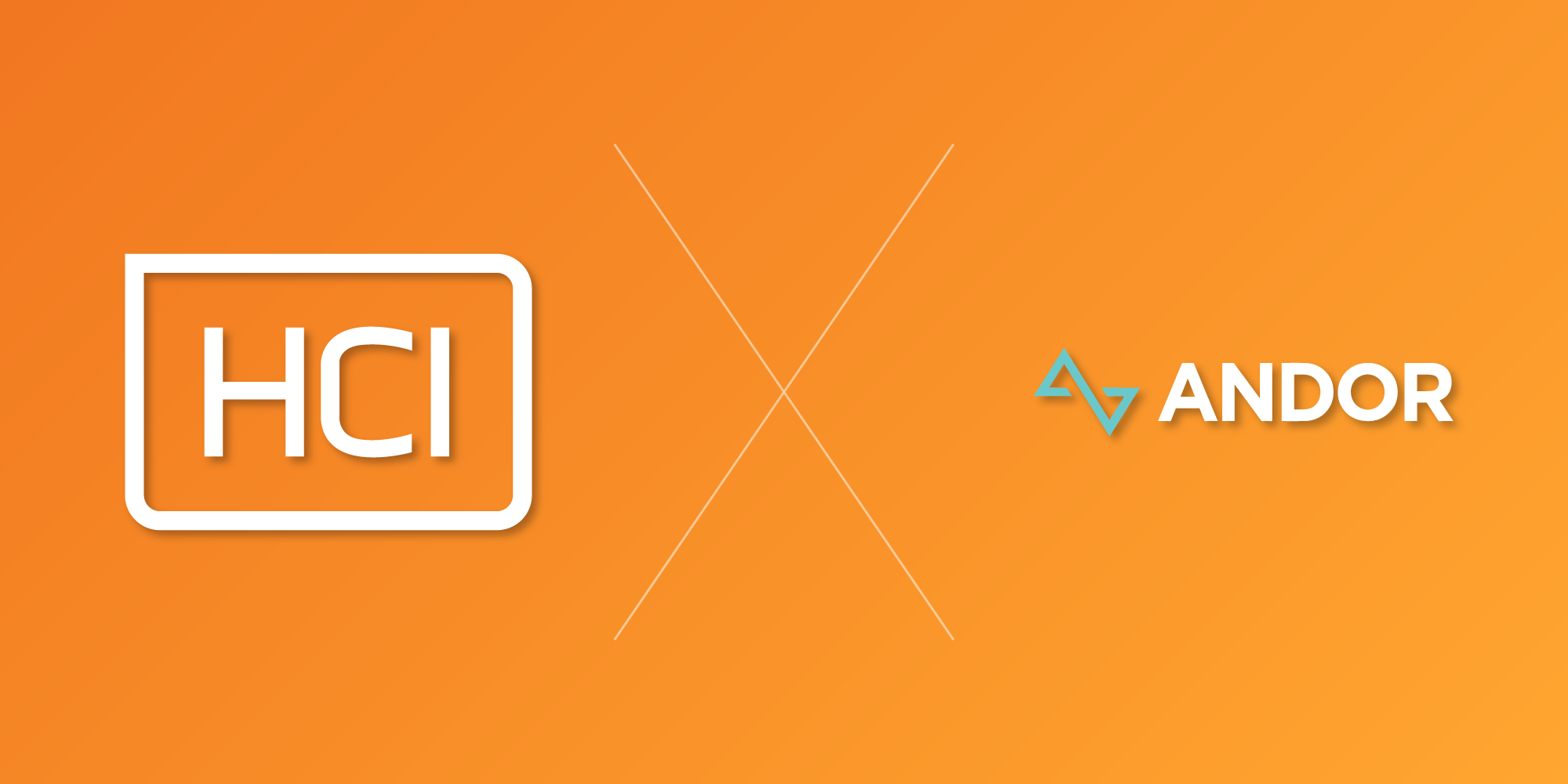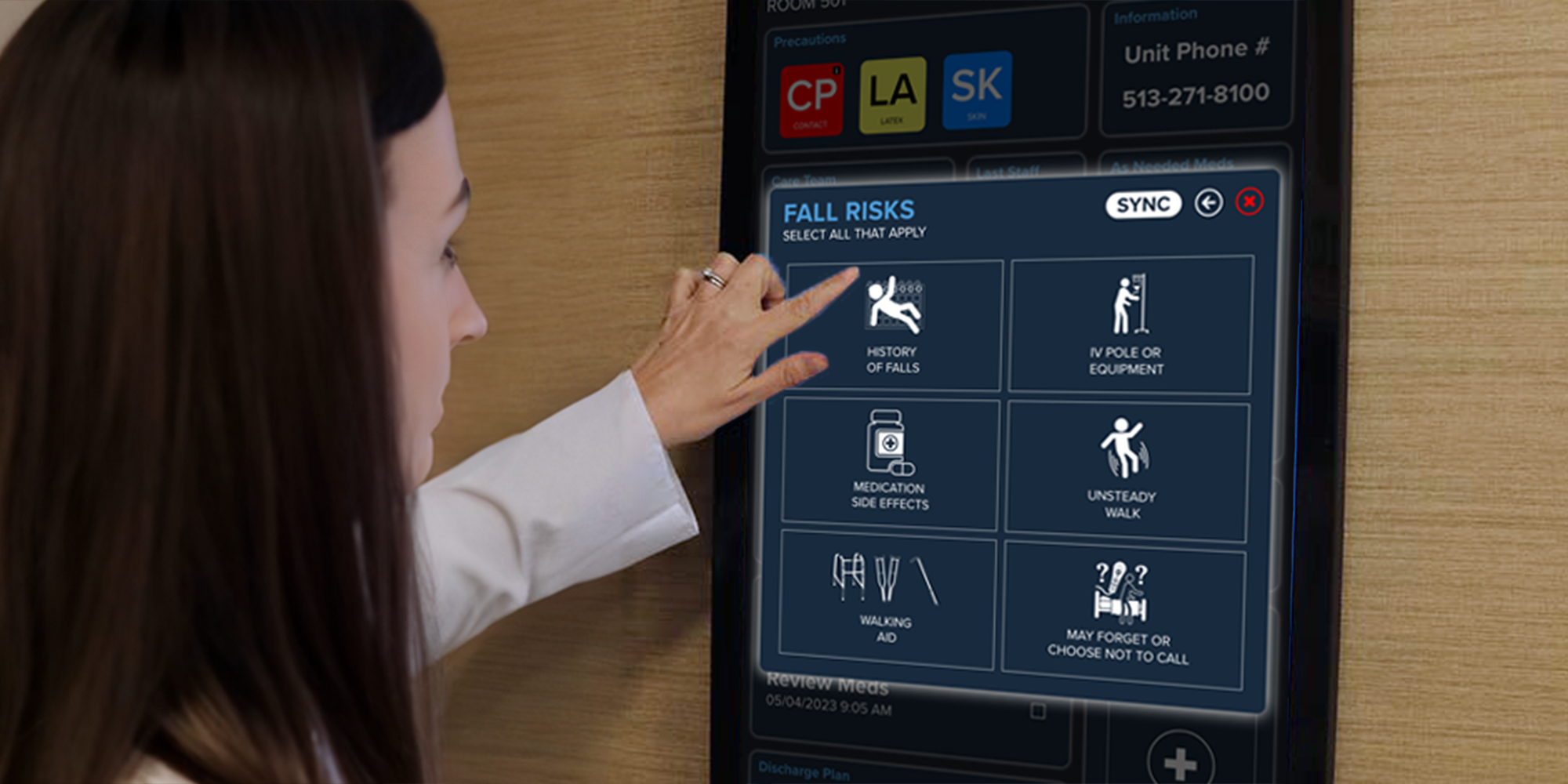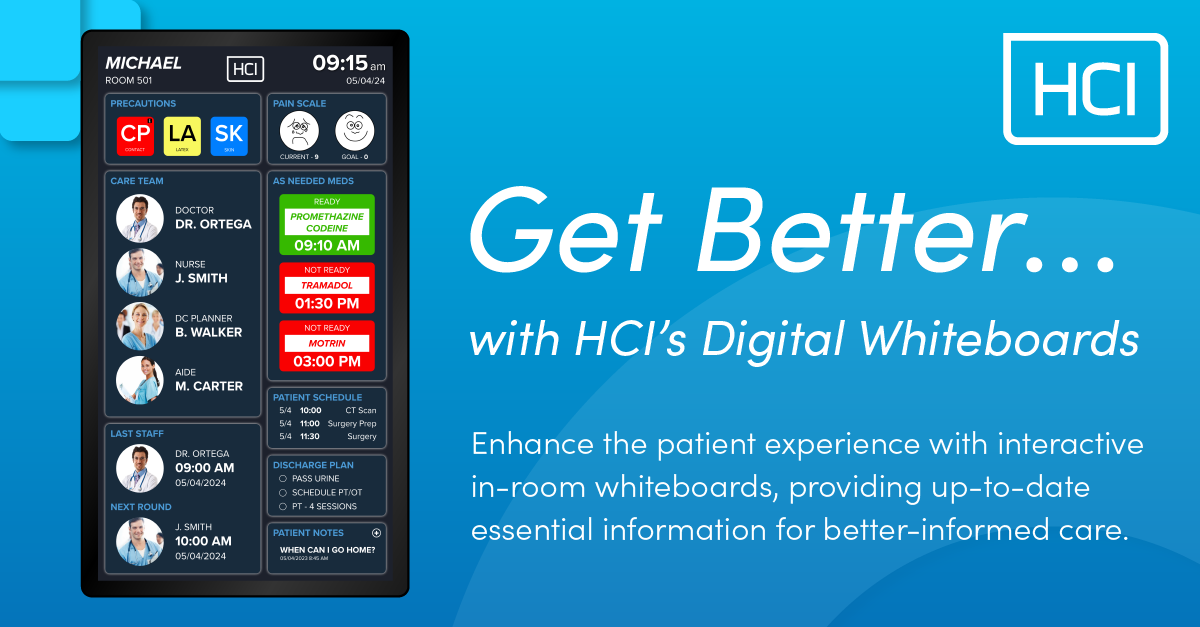HCI vs. Traditional Tools: Getting Better with Advanced Solutions
In today’s healthcare landscape, the shift from traditional methods like dry erase boards and paper charts to advanced digital solutions marks a revolutionary leap towards enhancing patient care and operational efficiency. This post explores how HCI’s innovative technologies are rendering traditional methods obsolete and setting new standards in healthcare communication and workflow management.
Traditional Tools in Healthcare: Limitations and Challenges
Historically, healthcare settings have relied on traditional tools that, while functional, now fall short in meeting the demands of a fast-paced, accuracy-driven environment. These include:
Dry Erase Whiteboards and Paper Charts
Once staples in hospitals for tracking patient information and assignments, these tools suffer from several critical drawbacks:
Delayed Communication: Manual updates lead to lags, compromising patient care during critical situations.
Higher Potential for Errors: Handwriting can be misread, and information can be lost or outdated, leading to medical inaccuracies.
Limited Accessibility and Interactivity: These tools offer no remote access or interactive capabilities, severely limiting engagement and real-time data sharing.
The Advantages of HCI’s Digital Whiteboards Over Traditional Methods
Transitioning to digital whiteboards, HCI’s solutions provide transformative benefits that address the inadequacies of traditional tools:
Real-Time Updates and Unlimited Space: HCI’s digital whiteboards integrate seamlessly with electronic medical records (EMR), ensuring that patient information is always current and accessible without physical constraints.
Interactivity and Enhanced Communication: These boards allow healthcare professionals to input and retrieve information directly, fostering better communication and streamlined workflows.
Remote Accessibility and Enhanced Patient Experience: With features like telemedicine integration, digital whiteboards make healthcare more accessible and interactive, significantly improving the patient experience by providing entertainment, education, and personalized communication.
Why HCI’s Solutions Stand Out
HCI’s digital whiteboards and other solutions offer distinct features that make them superior to other digital solutions in the market:
Bi-Directional Messaging and Integrations: Real-time communication capabilities enhance responsiveness and improve care.
Comprehensive Ecosystem: HCI provides a fully integrated ecosystem, including Patient TV, interactive door signs, and mobile applications, ensuring that all aspects of patient engagement are connected.
À La Carte Flexibility: Unlike one-size-fits-all solutions, HCI offers customizable options that allow healthcare facilities to adapt their systems gradually, adding new workflows and modules as needed.
Long-Term Benefits of Embracing HCI’s Advanced Solutions
Adopting HCI’s technologies not only resolves current challenges but also provides enduring advantages:
Streamlined Operations
By automating routine tasks, HCI’s solutions free up medical staff to focus more on patient care rather than administrative duties.
Increased Patient Satisfaction: Interactive and accessible tools empower patients, leading to improved satisfaction and health outcomes.
Operational Cost Reduction: Digital solutions minimize the reliance on paper, reduce errors, and optimize resource allocation, leading to substantial cost savings.
Conclusion
The healthcare sector is undergoing a transformative phase, driven by advanced technologies that greatly surpass traditional tools. HCI’s solutions offer a proactive approach to modern healthcare challenges, ensuring that facilities are equipped for better efficiency, accuracy, and patient-centered care. As the industry continues to evolve, embracing these technologies is not just beneficial but essential for healthcare facilities aiming to thrive in an increasingly digital world.
Share this
You May Also Like

HCI Virtual Nursing Goes Live at Goshen Health





